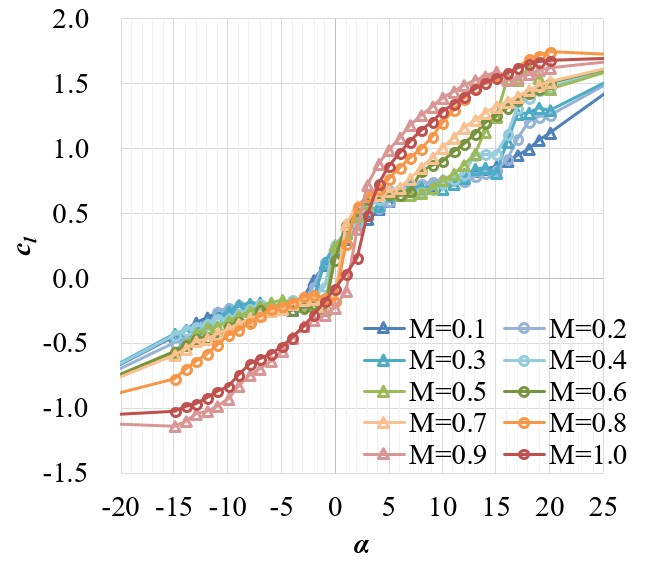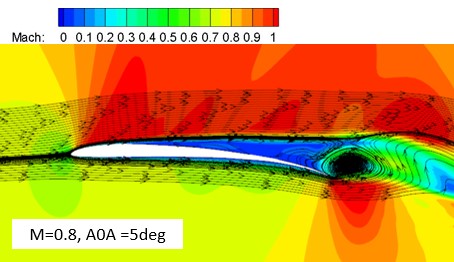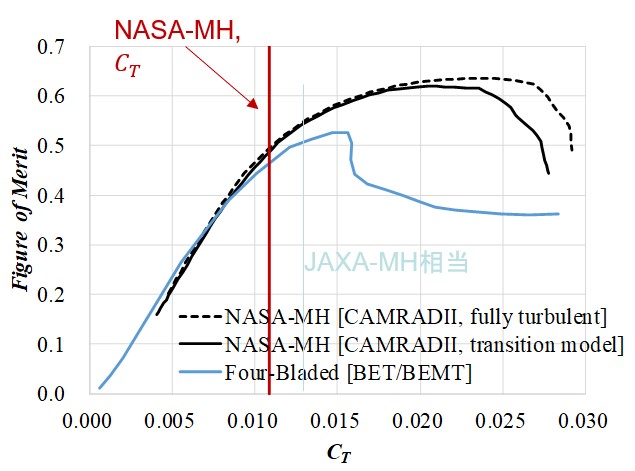Aerodynamic optimal design of mars helicopter rotor blade planform
JAXA Supercomputer System Annual Report April 2020-March 2021
Report Number: R20ECMP13
Subject Category: Competitive Funding
- Responsible Representative: Keita Kimura, Aeronautial Technology Directorate, Aviation System Research Unit
- Contact Information: Keita Kimura(kimura.keita@jaxa.jp)
- Members: Yasutada Tanabe, Keita Kimura, Hideaki Sugawara, Kuniyuki Takekawa, Masahiko Sugiura
Abstract
Japan's own mission to investigate the inside of a pit crater on the surface of Mars is being considered for around 2030, and a helicopter capable of hovering is expected to play an active role because it is required to move about 100m vertically. Since the atmospheric conditions on Mars are significantly different from those on Earth (low Reynolds number and high Mach number), it is considered difficult to operate efficiently with conventional helicopter airfoils and blade shapes. In this study, we investigate and propose a helicopter configuration and blade shape suitable for flight in the Martian atmosphere.
Reference URL
N/A
Reasons and benefits of using JAXA Supercomputer System
In the search for the optimum planar shape of a rotor blade, it is necessary to know the aerodynamic performance of the airfoil type to be used over a wide range of Mach numbers and angles of attack. A total of several hundred calculations were required to obtain the necessary aerodynamic characteristics, and the use of a supercomputer was appropriate.
Achievements of the Year
In this study, optimization of the blade planform (twist angle and chord length) for the Mars helicopter was carried out. For the optimization, it is necessary to understand the aerodynamic performance of the airfoil to be used, and the aerodynamic performance table was created by CFD using JSS. The target airfoil is the thin-winged clf5605 airfoil, which is considered to have less performance degradation in the Martian atmosphere. CFD simulations were conducted under the Martian atmospheric condition, which is very different from the Earth environment. The CFD solver used was FaSTAR developed by JAXA.
Figure 1 shows an example of the aerodynamic performance (AoA-lift coefficient) obtained from CFD. The aerodynamic performance for each condition is organized as a table, with sweeps in the range of Mach number 0~1.0 and angle of attack -15~20deg, The lift slope changes around AoA = 5 deg, and the Mach number contour (Figure 2, M=0.8, AoA = 5 deg) shows a low Mach number region due to stall. In order to confirm the validity of the obtained data, the prediction results of the helicopter performance by the blade-element momentum theory using the aerodynamic table were compared with the NASA's results (Fig. 2). Although the difference between JAXA and NASA's results appeared in the region where the thrust indicated by the horizontal axis was large, it was shown that the performance prediction was comparable to the NASA's results around the design thrust.
Publications
- Non peer-reviewed papers
SUGIURA Masahiko, et al. "Aerodynamic Optimal Design of Mars Helicopter Rotor Blade Planform", JAXA Special Publication: Proceedings of Fluid Dynamics Conference / Aerospace Numerical Simulation Symposium 2020 Online,JAXA-SP-20-008,157-164 (2021-02-08)
- Oral Presentations
SUGIURA Masahiko, et al. "Aerodynamic Optimal Design of Mars Helicopter Rotor Blade Planform", Fluid Dynamics Conference / Aerospace Numerical Simulation Symposium 2020 Online, 2B02.
Usage of JSS
Computational Information
- Process Parallelization Methods: N/A
- Thread Parallelization Methods: OpenMP
- Number of Processes: 1
- Elapsed Time per Case: 30 Hour(s)
Resources Used(JSS2)
Fraction of Usage in Total Resources*1(%): 0.13
Details
Please refer to System Configuration of JSS2 for the system configuration and major specifications of JSS2.
| System Name | Amount of Core Time(core x hours) | Fraction of Usage*2(%) |
|---|---|---|
| SORA-MA | 73,562.20 | 0.01 |
| SORA-PP | 169,418.50 | 1.33 |
| SORA-LM | 0.00 | 0.00 |
| SORA-TPP | 13,689.19 | 1.29 |
| File System Name | Storage Assigned(GiB) | Fraction of Usage*2(%) |
|---|---|---|
| /home | 3,603.33 | 3.30 |
| /data | 6,886.43 | 0.13 |
| /ltmp | 955.59 | 0.08 |
| Archiver Name | Storage Used(TiB) | Fraction of Usage*2(%) |
|---|---|---|
| J-SPACE | 6.24 | 0.21 |
*1: Fraction of Usage in Total Resources: Weighted average of three resource types (Computing, File System, and Archiver).
*2: Fraction of Usage:Percentage of usage relative to each resource used in one year.
Resources Used(JSS3)
Fraction of Usage in Total Resources*1(%): 0.32
Details
Please refer to System Configuration of JSS3 for the system configuration and major specifications of JSS3.
| System Name | Amount of Core Time(core x hours) | Fraction of Usage*2(%) |
|---|---|---|
| TOKI-SORA | 182,901.91 | 0.04 |
| TOKI-RURI | 438,585.35 | 2.51 |
| TOKI-TRURI | 0.00 | 0.00 |
| File System Name | Storage Assigned(GiB) | Fraction of Usage*2(%) |
|---|---|---|
| /home | 4,602.21 | 3.15 |
| /data | 12,181.43 | 0.20 |
| /ssd | 1,082.17 | 0.57 |
| Archiver Name | Storage Used(TiB) | Fraction of Usage*2(%) |
|---|---|---|
| J-SPACE | 6.24 | 0.21 |
*1: Fraction of Usage in Total Resources: Weighted average of three resource types (Computing, File System, and Archiver).
*2: Fraction of Usage:Percentage of usage relative to each resource used in one year.
JAXA Supercomputer System Annual Report April 2020-March 2021





